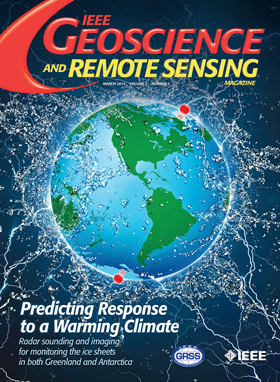Interferometric Phase Linking: Algorithm, application, and perspective
IF 16.2
1区 地球科学
Q1 GEOCHEMISTRY & GEOPHYSICS
引用次数: 0
Abstract
Mitigating decorrelation effects on interferometric synthetic aperture radar (InSAR) time series data is challenging. The phase linking (PL) algorithm has been the key to handling signal decorrelations in the past 15 years. Numerous studies have been carried out to enhance its precision and computational efficiency. Different PL algorithms have been proposed, each with unique phase optimization approaches, such as the quasi-Newton method, equal-weighted and coherence-weighted factors, component extraction and selection SAR (CAESAR), and eigendecomposition-based algorithm (EMI). The differences among the PL algorithms can be attributed to the weight criteria adopted in each algorithm, which can be coherence-based, sparsity-based, or other forms of regularization. The PL algorithm has multiple applications, including SAR tomography (TomoSAR), enhancing distributed scatterers (DSs) to combine with persistent scatterers (PS) in PS and DS (PSDS) techniques, and compressed PSDS InSAR (ComSAR), where it facilitates the retrieval of the optimal phase from all possible measurements. This article aims to review PL techniques developed in the past 15 years. The review also underscores the importance of the PL technique in various SAR applications (TomoSAR, PSDS, and ComSAR). Finally, the deep learning (DL) approach is discussed as a valuable tool to improve the accuracy and efficiency of the PL process.干涉相位连接:算法、应用和展望
减轻干涉合成孔径雷达(InSAR)时间序列数据的去相关效应是一个具有挑战性的问题。在过去的15年中,相位连接算法一直是处理信号去相关的关键。为了提高其精度和计算效率,人们进行了大量的研究。人们提出了不同的相位优化算法,每种算法都有独特的相位优化方法,如准牛顿法、等权因子和相干加权因子、分量提取和选择SAR (CAESAR)和基于特征分解的算法(EMI)。PL算法之间的差异可以归因于每种算法中采用的权重标准,这些权重标准可以是基于相干的、基于稀疏的或其他形式的正则化。PL算法有多种应用,包括SAR层析成像(TomoSAR),增强分布式散射体(DS)与PS和DS (PSDS)技术中的持久散射体(PS)相结合,以及压缩PSDS InSAR (ComSAR),它有助于从所有可能的测量中检索最佳相位。本文旨在回顾过去15年开发的PL技术。该综述还强调了PL技术在各种SAR应用(TomoSAR, PSDS和ComSAR)中的重要性。最后,讨论了深度学习(DL)方法作为提高PL过程准确性和效率的有价值的工具。
本文章由计算机程序翻译,如有差异,请以英文原文为准。
求助全文
约1分钟内获得全文
求助全文
来源期刊

IEEE Geoscience and Remote Sensing Magazine
Computer Science-General Computer Science
CiteScore
20.50
自引率
2.70%
发文量
58
期刊介绍:
The IEEE Geoscience and Remote Sensing Magazine (GRSM) serves as an informative platform, keeping readers abreast of activities within the IEEE GRS Society, its technical committees, and chapters. In addition to updating readers on society-related news, GRSM plays a crucial role in educating and informing its audience through various channels. These include:Technical Papers,International Remote Sensing Activities,Contributions on Education Activities,Industrial and University Profiles,Conference News,Book Reviews,Calendar of Important Events.
 求助内容:
求助内容: 应助结果提醒方式:
应助结果提醒方式:


